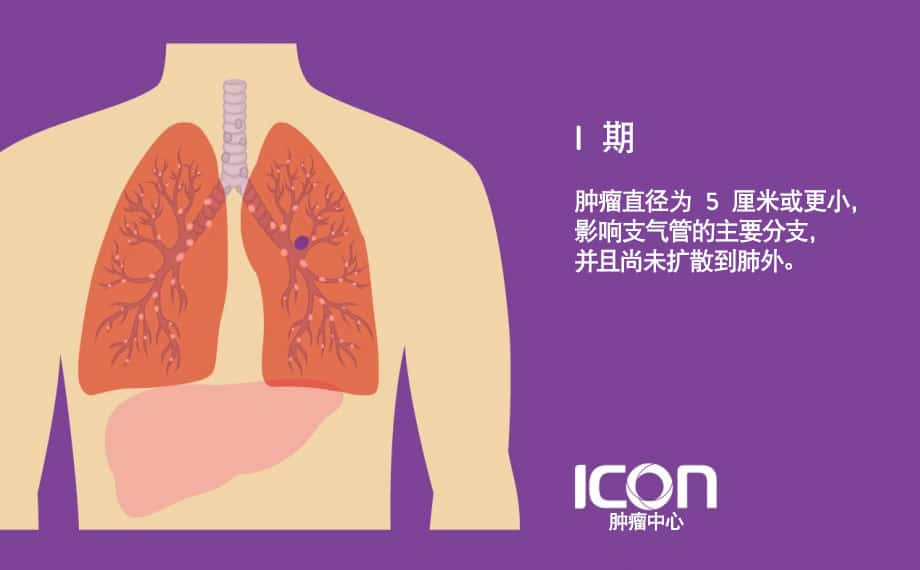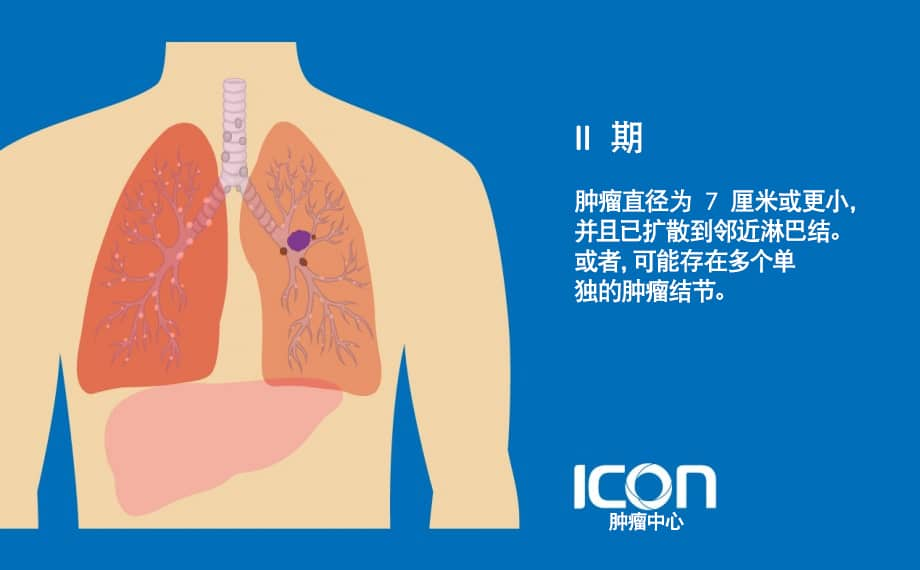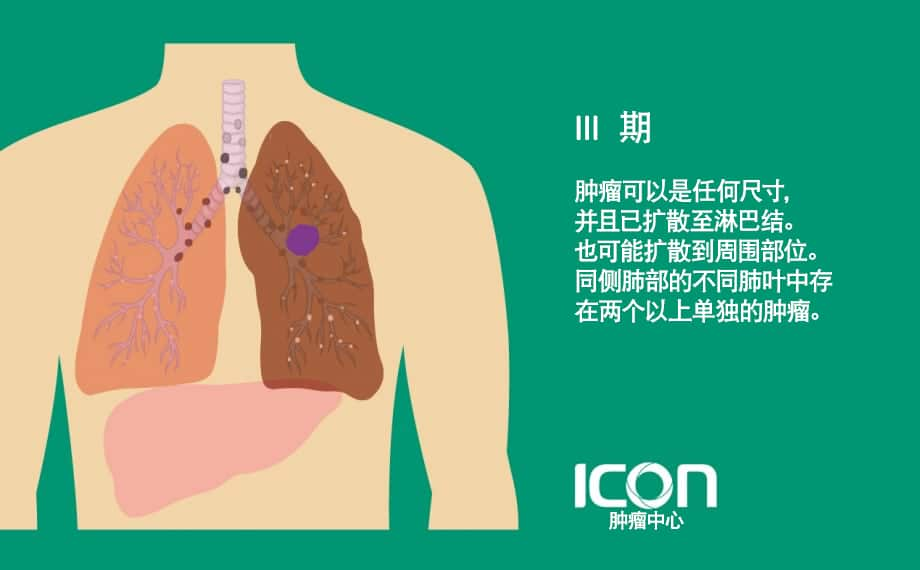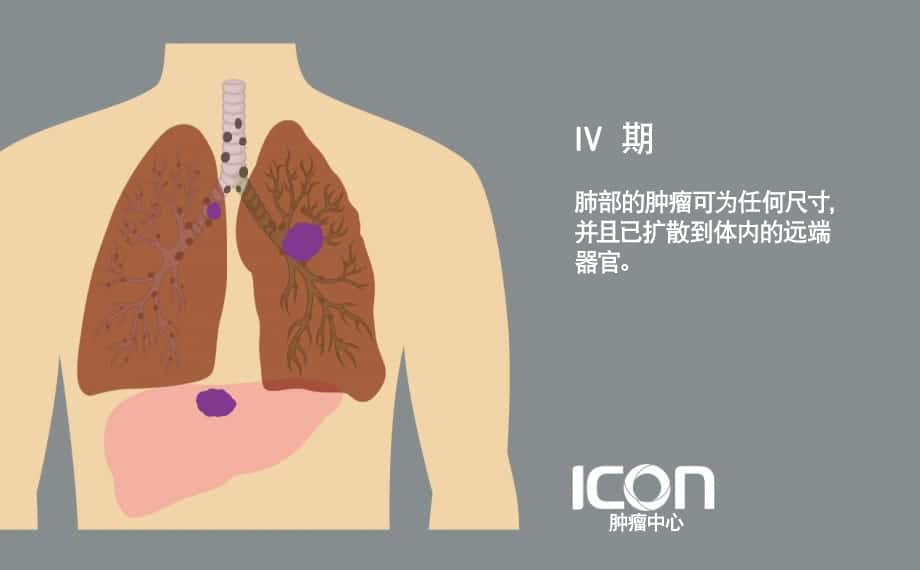The 2023 Annual Conference of Respiratory Physicians of the Chinese Medical Doctor Association and the 22nd Forum of Chinese Respiratory Physicians (CACP 2023) will be held in Dalian on June 15-18, 2023 as scheduled. Lung cancer is currently the cancer with the highest morbidity and mortality in my country, and its early screening and diagnosis are very critical.
Dingxiangyuan Breathing Time specially invited Professor Li Weimin, Dean of West China Hospital of Sichuan University and Department of Respiratory and Critical Care Medicine, to conduct an exclusive interview on early screening and diagnosis of lung cancer. The content of the interview is organized as follows for readers.
https://iconcancercentre.sg/zh-hans/cancer/lung/
1. Lung cancer
1.1 Definition
Lung cancer is the uncontrolled growth of abnormal cells in the tissue of one or both lungs, which has the property of developing into a malignant tumor.
- Lung cancer can be in the windpipe (bronchi) or in the cavernous lung tissue (alveoli).
- Lung cancer can also be caused by cancer that has spread from another part of the body, but these cancers themselves are not considered lung cancer.
1.2 Classification of primary lung cancer
- Non-small cell lung cancer (NSCLC) – This is the most common form of lung cancer, accounting for approximately 85% of all lung cancer cases.
Non-small cell lung cancer can be divided into several types, including:
- Adenocarcinoma – usually in the mucus-producing cells on the outside of the lungs
- Squamous cell carcinoma – usually found in the airways of the lungs
- Undifferentiated Large Cell Carcinoma – These cancers cannot be classified as adenocarcinoma or squamous cell carcinoma.
- Small cell lung cancer (SCLC) – This type of lung cancer is more likely to spread quickly than non-small cell lung cancer, but is less common, accounting for about 15 percent of all lung cancers.
Lung cancer is the second and third most common cancer in Singaporean men and women, respectively.
1.3 Stages of lung cancer staging
Lung cancer is staged using the TNM system, which stands for:
-
Tumor (T) – Describes the size of the tumor and how far the cancer has spread into the lung tissue. Tumors can be graded from T1a (describes tumors smaller than 1 cm) to T4 (describes tumors larger than 7 cm).
-
Lymph (N) - Describes whether the tumor has spread to nearby lymph nodes. Lymph nodes can be graded from N0 (meaning no spread) to N3 (meaning cancer has spread to other parts of the body, such as the chest or the other side of the collarbone).
-
Metastatic (M) - Describes whether the cancer has spread to other areas of the body other than the lungs. The metastatic grade ranges from M0 (meaning it has not spread) to M1c (meaning the cancer has spread to other organs in the body and created more tumors).




1.4 Causes of Lung Cancer
Risk factors for lung cancer include:
-
smokes. The more you smoke every day and the longer you smoke, the higher your risk of lung cancer. At any age, quitting smoking significantly reduces the risk of lung cancer.
-
Exposure to secondhand smoke. Even if you don't smoke, your risk of lung cancer increases if you are exposed to secondhand smoke.
-
Have received radiation therapy. If you have had radiation therapy to the chest for another cancer, your risk of lung cancer may be increased.
-
Exposure to radon gas. Especially on construction sites: Radon gas is a product of the natural breakdown of uranium in soil, rocks, and water, eventually becoming part of the air you breathe. Dangerous levels of radon gas can accumulate in any structure, including your home.
-
Exposure to asbestos and other carcinogens. Workplace exposure to asbestos and other carcinogens (such as arsenic, chromium, and nickel) increases the risk of lung cancer, especially in smokers.
-
Family history of lung cancer. If a parent, sibling, or child has lung cancer, you are at higher risk for lung cancer.
2. Examination and treatment of lung cancer
2.1 Clinical symptoms
- difficulty breathing, wheezing, and coughing
- Shoulder or chest pain, worse when breathing
- hard to swallow
- cough up blood
- unexplained sleepiness or fatigue
- swelling of the face, or enlarged veins in the neck
- Long-term persistent cough that does not improve
Syndromes caused by lung cancer:
Certain lung cancers can also cause specific symptoms called syndromes. Syndromes associated with lung cancer include:
Superior vena cava (SVC) syndrome:
The superior vena cava is a large blood vessel that carries blood from the head and arms to the heart.
Tumors near the lungs can compress this large blood vessel, causing swelling in the face and neck, chest, and upper arm areas.
Paraneoplastic syndromes:
Some lung cancers produce hormone-like substances that can affect other tissues and organs in the body.
Certain paraneoplastic syndromes include:
Hypercortisolism: The adrenal glands in the body may produce too much cortisol (due to cancer cells that produce certain hormones), which can lead to weight gain, as well as symptoms of dizziness/tiredness and weakness.
SIADH (Syndrome of Inadequate Antidiuretic Hormone) - Cancer cells make hormones that make the kidneys produce water and reduce the amount of salt in the blood.
Symptoms may include: cramps and muscle weakness, tiredness, nausea and/or vomiting. In severe cases, seizures and coma may occur.
2.2 Inspection means
At present, all countries in the world recommend lung cancer screening, especially recommending low-dose spiral CT for lung cancer screening. In my country, a broad consensus has been reached. Low-dose spiral CT is recommended for lung cancer screening, and it is also carried out in most hospitals. extensive promotion and application.
But to further popularize it to all our common people, we still face the following difficulties.
First, the significance of screening for lung cancer is not clear to ordinary people, and health education needs to be further strengthened, so that ordinary people know that screening can improve the 5-year survival rate of lung cancer is one of the tasks we need to do.
Second, the focus of the screening work needs to be done in our primary medical institutions, but the primary medical institutions also face the problem of insufficient diagnostic capabilities, including the missed diagnosis of early detection of lung cancer, and the inability to correctly identify early lung cancer.
Third, low-dose helical CT has not yet been popularized in our remote mountainous areas, especially in the minority areas in the west. Our West China Hospital has jointly developed mobile CT with domestic enterprises, providing door-to-door services in communities and rural areas, so that ordinary people can get lung cancer screening at their doorsteps without going to large hospitals.
Fourth, the issue of funding. Currently, low-dose spiral CT still needs to be paid at its own expense, and it is still difficult for ordinary people. We hope that in the future, we can raise funds from various sources, such as providing some guiding funds through our medical insurance, so that the funding problem can be solved.
Fatality:
Lung cancer is the number one killer that endangers the lives and health of our people, and it is the number one cause of death in both men and women. How to reduce the mortality rate of lung cancer and further improve the 5-year survival rate of lung cancer is the biggest challenge we face.
One of the very important reasons why the mortality rate of lung cancer is so high is that most lung cancers are diagnosed at the middle and late stage, especially the late stage lung cancer has reached 68%, and the early stage lung cancer diagnosis is only 19%. The 5-year survival rate of early lung cancer can reach more than 92%, while in the advanced stage, the 5-year survival rate of patients is only 5-6%. Therefore, early detection of lung cancer is the biggest problem we face.
2.3 Treatment methods
Non-small cell lung cancer is the most common type of lung cancer. Not long ago, your team published the latest research in Nature Communications, constructing a new fluorescent molecular probe to provide a new solution for EGFR-TKI targeted drug therapy. We want to know what positive impact this research result will have on clinical practice?
-
Non-small cell lung cancer (NSCLC) is the most common type, accounting for about 85% of all lung cancers. Epidermal growth factor (EGFR) gene mutation is the main driver mutation gene of non-small cell lung cancer, and about 80% of EGFR mutations are exon 19 deletion mutation (EGFR 19DEL) and exon 21 L858R mutation (EGFR L858R), also known as Activating mutations for EGFR.
-
At present, small molecule inhibitors targeting EGFR activating mutations (EGFR-TKI) have shown good clinical therapeutic effects and are the first-line treatment for patients with EGFR mutation-positive advanced lung cancer.
However, it has been found that EGFR-TKI therapy is ineffective for 20%-30% of patients with positive EGFR gene mutations in clinical practice, indicating that not all lung cancer patients with EGFR gene mutations can respond to EGFR-TKI therapy.
In response to this clinical problem, our team developed a new fluorescent molecular probe (HX103), which is highly specific and sensitive, and can specifically "light up" functionally active EGFR, which is expected to be useful in clinical practice. It provides a new method to predict the efficacy of EGFR-TKI. Therefore, this study is expected to provide a new method for the individualized precision treatment of lung cancer and a new solution for the prediction of the effect of cancer targeted therapy.
3. Fluorescent probes
3.1 Definition
After being excited by the excitation light, it returns to the ground state from the excited state singlet state, and has characteristic light emission in the ultraviolet-visible-near-infrared region, which is called fluorescence. A class of fluorescent molecules whose fluorescent properties (excitation and emission wavelengths, intensity, lifetime, polarization, etc.) can be sensitively changed with changes in the properties of the environment, such as polarity, refractive index, viscosity, etc., are called fluorescent probes.
3.2 Classification
There are many classifications of fluorescent probes, which can be divided into organic and inorganic probes according to the material properties, molecular probes and nanoprobes according to the size of the probes, and single-photon, two-photon and multi-photon fluorescent probes according to the excitation light source. Needles can also be classified into metal ion fluorescent probes and biomolecular fluorescent probes according to the analytes.
3.3 Application
Fluorescent probes are widely used in various detection and labeling, such as the determination of metal ions, pesticide residues, biomolecular content, trace biomolecules, and label macromolecules and cell and subcellular structures.